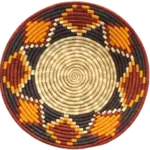Info Danakil Depression Environment
Info Danakil Depression Environment – The lowlands of the Afar Depression are dominated by heat and drought. There is no rain for most of the year, and yearly rainfall averages range from 100 to 200 millimeters (4 to 7 in), with less rain falling closer to the coast. The settlement of Dallol in northern Ethiopia holds the record high average temperature for an inhabited location on Earth, where an average annual temperature of 34°C (94°F) was recorded between the years 1960 and 1966. Dallol is also one of the most remote places on Earth.
The Awash River, flowing northeastward through southern Afar, provides a narrow green belt and enables life for the flora and fauna in the area and for the Afars, the nomadic people living in the Danakil desert. The Awash River, contained completely within the boundaries of Ethiopia, is the only river that flows into the Depression. It is the principal stream of an endorheic drainage basin covering parts of the Amhara, Oromia and Somali Regions, as well as the southern half of the Afar Region.
About 1200 km² (463 sq mi) of the Afar Depression is covered by salt, and salt mining is still a major source of income for many Afar tribes.
The Middle Awash is an archaeological site along the Awash River. A number of Pleistocene and late Miocene hominid remains have been found at the site, along with some of the oldest known Olduwan stone artifacts and patches of fire-baked clay. The Middle Awash contains the site of Hadar, where Australopithecus afarensis, including the famous “Lucy” partial skeleton and the “First Family” were discovered. Not only hominids, but also elephantoids, crocodiles and hippopotamus remains have been found in this region.
Also within the Afar Depression is the Danakil Desert, which lies in northeastern Ethiopia and in southern Eritrea and much of Djibouti. The Danakil’s main industry is salt mining, while it is also home to wildlife, including African wild asses.
The desert is the homeland of the Afar people, the majority of whom have remained nomadic pastoralists, raising goats, sheep, and cattle in the desert. During the dry season, most move to and camp on the banks of the Awash River. Camels comprise the most common means of transportation as the Afar nomads move from watering hole to watering hole. With the arrival of the rainy season in November, most relocate to higher ground in order to avoid both flooding and mosquito’s.
Lake Assal In Ethiopia is a Salt flats in north eastern part of Ethiopia. It lies 120 m BSL and it is the second largest salt flats on earth.
Lake Assal in Djibouti is one of the most saline bodies of water on the earth, with a 34.8 percent salt concentration (up to 40 percent at 20 m (66 ft) depth). The sources of the lake are hot springs whose salinity is close to sea water, which are fed by the Gulf of Tadjoura, the eastern extension of the Gulf of Aden, specifically the nearly closed-off bay Ghoubet Kharab, about 10 km southeast of the lake. It lies 155 m (515 ft) below sea level; its shores comprise the lowest point on land in Africa.
The lake area is half og it a sult flats in most of the seasons, and no fauna or flora can be seen in the syrupy waters of the lake. The high temperature of the water (33-34 °C) favors evaporation, and it is surrounded by a salt pan which extends west and mainly northwest. The salt is mined and transported by camel caravan to the highland of Ethiopia.
